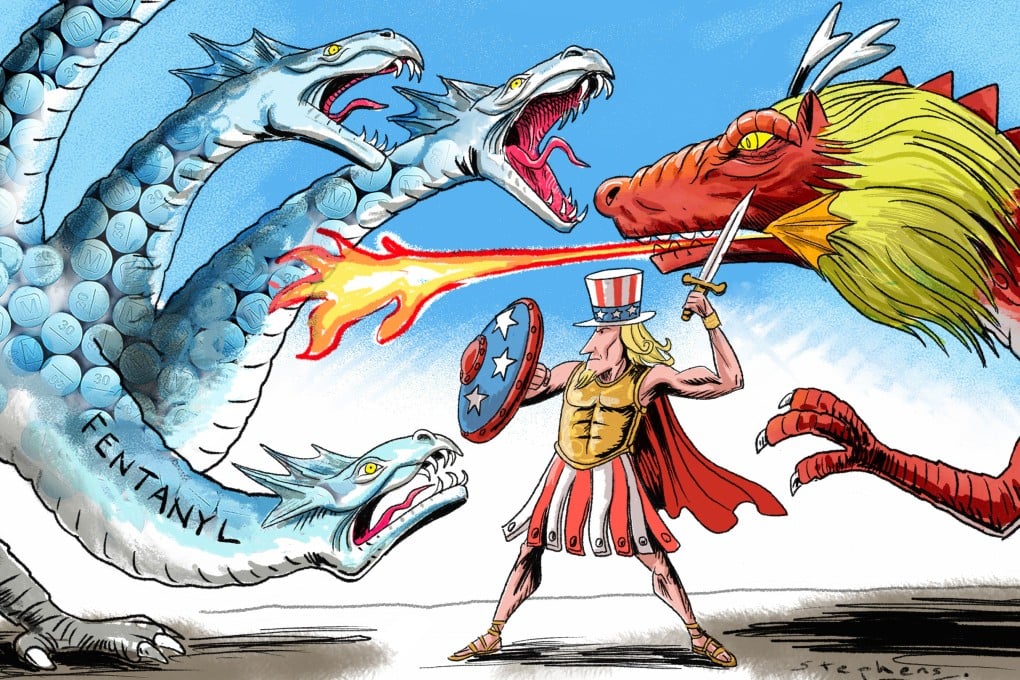Advertisement
Opinion | To slay Hydra-like fentanyl scourge, US needs more than China’s help
- The US needs to redouble global cooperation to curb supply and enforce a much stricter drug policy at home to curb demand. China’s support is only a first step
Reading Time:4 minutes
Why you can trust SCMP
4

The fentanyl crisis looms large in the United States. The November meeting between Chinese President Xi Jinping and US President Joe Biden offered a glimmer of hope when Xi agreed to curb the flow of fentanyl into America. While China’s support is a crucial first step, combating covert supply chain operations for fentanyl necessitates global cooperation and a multifaceted approach involving a strict drug control policy.
Advertisement
Fentanyl, a synthetic opioid, is 50 times more potent than heroin: a tiny amount can result in a fatal overdose. In 2022, drug overdose was a leading cause of death for Americans aged 18 to 45 years, with 70 per cent of those cases involving fentanyl.
Fentanyl addictions and overdoses have the potential to become a global crisis. Canada has seen an increase in opioid-related deaths in recent years. While countries such as Australia, Germany and Britain have also experienced an uptick in opioid consumption, it has not reached the same levels as in the US and Canada.
Meanwhile, fentanyl consumption in China, Mexico and India remains relatively low, but this could change given their heavy involvement in fentanyl production.
To reduce fentanyl overdose deaths in the US, it is essential to understand the flow of illegally made fentanyl. Its illicit trade starts with the production of fentanyl precursor chemicals in nondescript factories in countries like China and India, followed by clandestine shipments to Mexico, often concealed in regular cargo.
Advertisement
Fentanyl production using these precursors then occurs in secret labs operated by cartels such as the Sinaloa cartel. The final drug – frequently mixed into counterfeit pills – is smuggled into the US and sold on the street, contributing to the deadliest drug crisis in US history.

Advertisement

